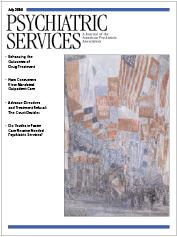Sexual Murder: Catathymic and Compulsive Homicides
In Sexual Murder: Catathymic and Compulsive Homicides, Louis B. Schlesinger presents a nonexploitive view of sexual homicide that discusses the controversies in identification of these crimes and perpetrators. Schlesinger, a forensic psychologist and associate professor at John Jay College of Criminal Justice, provides a thorough historical background of sexual murder in the context of crime in general. He skillfully presents a discourse of forensic assessment and sexual murder classification, specifically distinguishing the catathymic and compulsive types. Finally, he ends with a well-written comprehensive presentation on the prediction of sexual homicides and the potential for intervention.
"Sexual murder" is not a clearly defined term among experts on this phenomenon. Whereas the definition of homicide as the willful killing of one human by another is straightforward, the definition of sexual homicide is rife with debate. Some experts prefer to see any murder in which sexual contact is explicit as a sexual homicide, whereas others confer this designation only when the perpetrator describes an internal feeling of arousal. Although Schlesinger does not provide his own definition of sexual murder, he does promote the need to understand these acts by examining the context of the crime and the psychodynamics of the criminal. He emphasizes how important it is for forensic examiners to review witnesses' statements, collateral history from family and employers, police reports, and autopsy findings before formulating expert opinion about the criminal's intent or accountability for an offense. Otherwise, examiners may arrive at distorted conclusions by relying solely on information obtained from interviews with the criminal and by focusing on "the presenting problem" as in clinical practice instead of seeking more reliable evidence from collateral sources.
Catathymic and compulsive murders are two distinct categories of sexually motivated murders. Catathymic murder is performed for an affective catharsis, fueled by an underlying sexual conflict in which the victim is perceived as a threat to ego. Typically, the victim stimulates feelings of sexual inadequacy in the perpetrator, yielding an explosive homicidal revenge followed by psychic relief. In contrast, compulsive murderers are driven by an internal irresistible urge to kill, providing a thrill comparable to that of sexual gratification. Whereas catathymic murderers typically do not repeat their acts, compulsive murders—also known as serial killers—have psychic insatiation. Thus they need to repeatedly commit their characteristic acts of torture and sexual deviancy as a means of controlling their victims, which provides them with a sexual euphoria. Schlesinger uses multiple cases both to expound on the differences between these types of sexually motivated murders and to point out the often blurred distinction between them.
Schlesinger presents views of other researchers who have studied sexual murder and reveals whether findings have been substantiated clinically or empirically. In addition, he offers a reasonable way to predict possible future sexual murder by determining motivation for homicides already committed and assessing ten ominous signs, including a history of unprovoked attacks on females and animal cruelty.
I recommend this book to all clinicians of all disciplines. Sexual Murder is a guide for understanding—and possibly intervening against—these relatively enigmatic yet sensationalized people who inflict such substantial devastation on individuals, on communities, and on us all.
Dr. Kellaher is a third-year general psychiatry resident at the University of Hawaii in Honolulu.



